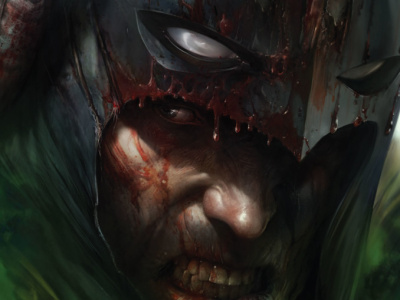
A few weeks ago at the San Diego Comic-Con, we sat down with DC President and Publisher Paul Levitz for our annual talk about the state of the comic business and DC's place in it. In Part 1, we talk about the current state of the market and its prospects. In Part 2, we talk about DC's investments in Webcomics. In Part 3, we talk about DC's investment in Japan, and how that relates to its strategy for a flow of content for its CMX line, the launch of DC's new Minx imprint, and the opportunities for cross-fertilization of content and customers with MMORPGs. In Part 4, we talk about DC's film pipeline and strategy, Levitz's take on DC's upcoming releases, and how the changes in the market are changing comics.
As we do every year, we'd like to start out with your take on an overview of the market, both periodicals and graphic novels.
It just feels like it's a wonderful time in comics right now. The range of creative material seems to be expanding everywhere you look. The reactions to it are getting both warmer and wider. More places are talking about the medium seriously; covering it seriously; Not quite proselytizing it in the literal sense that some of the people in comics have done for years, but really joining in that effort of reaching out because they're buying into what we've been saying for so long; and that seems to be creating a fairly steady stream of new converts to what we do.
It's easiest to see that process of conversion for the graphic novel side, which is touching more and more new lives, I think pretty steadily; but the periodical side seems to have had a very healthy couple of years, and some piece of that is coming from people that have dipped their toe in lightly from the graphic novel side. They've been reminded that comics 'Oh! this is still fun. I'd like more than just the light dose. Where's the deep end of the pool?' And some are moving over to the deep end of the pool as well.
We've both been around long enough to have seen the comic market go up a number of times in the past and often when that happened, it was followed by a decline due to the nature of the growth and where it was coming from. Could you talk a little bit about similarities or differences between this period of growth and previous ones you've seen, and what that means for the prognosis for the coming years?
Well I think there are two positive correlations: one, you certainly know from our dialogues literally over the decades now, that I never valued a sale that didn't involve reading nearly as much as I did one where people were ultimately reading the comic book.
When we were selling a carton load of something to someone for an investment purpose, it wasn't bad for the profitability of the publisher or the sort of Medici-like funding of the creators' work in some cases, the patronage of the arts. But in the end it wasn't as sustainable a thing. We seem to be growing new readers at a really healthy clip through all of this and that, I think, is the most positive sign in the process.
All of the research we've done, which is certainly not large enough to be exhaustive but probably more energetic than anybody else in the racket I suspect, indicates that the number of readers is just burgeoning compared to where it was before. I think the other similarity on a positive level to what happened historically is that this reminds me very much of the period from about '85 to '88 when the number of retail outlets weas increasing significantly. We found that the combination of the publishers generally doing some more interesting material in those years, The Dark Knights and the Mauses of the world, with the fact that a new retailer would spring up, would almost create some spontaneous generation. If you had good stuff, and you put it somewhere where people might find it, some people would ultimately find it and it would brew more sales over a fairly short period of time. I don't think we're seeing the literal growth in front doors that we had in those years, but I think the comic shops are trading up in space in many cases, getting stronger. That's having some of that effect, and on the book store side of life the amount of retail space being devoted to comics and the quality of retail space being devoted to comics has been improving fairly steadily, and I think when you measure that effect, that's very similar to what was happening when we were opening new front doors.
On the bookstore side, there have been some trends in the negative direction with the announcement of the closing of a number of Walden stores which were a significant number of storefronts for graphic novels in malls. What is your evaluation of the status of bookstore rack space this year versus a year ago? Do you think it is still going up?
I think as a total it is still going up. Losing Walden's is not a good thing for reading, obviously. I think it is a disproportionately challenging thing for the manga side of the field because Walden's had been an early and extraordinarily strong supporter of manga, particularly during the time Kurt Hassler was working very energetically there.
I don't think Walden's was ever proportionately as strong on the American graphic novel as it was on manga. I think the space that we are losing there has been more than offset by what we have picked up in the mainstream stores as they have been reconfigured.
Mainstream stores?
Both Borders and Barnes and Noble, but also the chains that people pay a little less attention to from a publicity standpoint like Books-a-Million, which has significantly increased its commitment, and really the flow-through to the other opportunities including Indigo in Canada, which did their first major promotion with us this year with some very significant effect in the first quarter. I think the overall net is that there are probably more linear feet out there than there was before, and I think we are going to see that trend accelerate still more in the next year.
Click here for Part 2.







